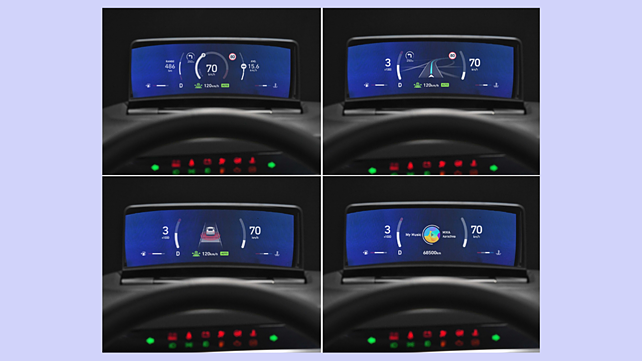
With the global automotive industry entering an era of full-scale electric vehicles, optimal vehicle interior space utilisation gains significance. As a response to this, the seventh-largest automotive supplier, Hyundai Mobis, has developed a 'Clusterless HUD,' which integrates the functions of the cluster and the HUD (Heads-Up Display).
A new, next-generation cockpit technology, the clusterless HUD, minimises driver distraction by distributing the various kinds of driving information displayed in the cluster to the HUD in front of the driver and AVNT (Audio, Video, Navigation and Telematics).
The Clusterless HUD is characterised by the fact that it raised the height of the driving information, which is required at all times, such as speed and RPM, to the driver's eye level.
In addition to HUD's inherent driving assist functions, such as navigation, it has also greatly enhanced safety and convenience. It is said to have differentiated the design and improved the visibility of the driving information display. Other auxiliary driving information is displayed through AVNT.
Construction
The Clusterless HUD is divided into four display areas, including three at the top, and one at the bottom. The top display areas show the speed, RPM, ADAS-related information, and navigation information. The bottom display area shows basic vehicle information, such as the shift mode, temperature of the coolant, and distance to empty. It can also display the turn signal, system information warning lights, etc.
It has a 15-inch display, providing a much larger display area than existing products. The company developed the new manufacturing technology for the combiner mirror, which implements HUD functions through the optical glass installed on the side of the dashboard, and the optical deposition specifications, thereby securing producibility.
The company has also secured visibility for drivers by designing the frame fixed in the vehicle to slope towards the driver.
The Clusterless HUD will increase the utilisation of the interior space. Currently, global automakers are focusing on securing interior space, such as enlarging the interior space, by applying the platform exclusively for electric vehicles. Besides, the weight reduction is expected to help increase the range as well.